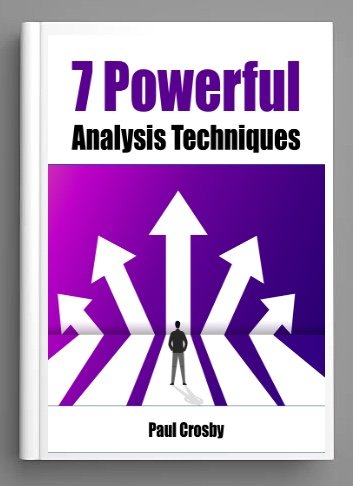Refining the Product Backlog with the Nuisance Scale Technique: A Guide for Business Analysts
In the Agile development landscape, the product backlog is a living document that encompasses all features, enhancements, and fixes that the team envisions for the product. Its continuous refinement is crucial for prioritizing items that deliver the most value to the user and align with the project's strategic goals. Business Analysts (BAs), with their arsenal of business analysis techniques, play a pivotal role in this refinement process. Among these techniques, the Nuisance Scale, a less conventional yet highly effective tool, can offer unique insights into backlog prioritization. This article explores how BAs can leverage the Nuisance Scale in the refinement of the product backlog to drive better project outcomes, enhancing both systems analysis and Agile development processes.
Understanding the Nuisance Scale Technique
The Nuisance Scale is a prioritization technique that assesses backlog items based on the level of inconvenience or "nuisance" they pose if left unresolved. This assessment goes beyond traditional prioritization factors like business value or development effort, focusing instead on the potential negative impact on the user experience or system efficiency. The scale typically ranges from minor nuisances, which have little to no impact on overall functionality, to major ones, which can significantly hinder user satisfaction or system performance.
Application in Backlog Refinement
1. Assessing Backlog Items: The first step involves evaluating each item in the product backlog against the Nuisance Scale. BAs can collaborate with stakeholders and development teams to gauge the inconvenience level of unresolved items, considering factors like user complaints, system inefficiencies, and workaround complexities.
2. Categorization: Backlog items are then categorized based on their nuisance level. Categories can range from "Low Nuisance" for items that have minimal impact on users or system performance, to "Critical Nuisance" for items that significantly degrade the user experience or system functionality.
3. Prioritization: Items categorized as "Critical Nuisance" are given higher priority in the backlog refinement process. These items are addressed in upcoming sprints to alleviate significant pain points, thereby enhancing user satisfaction and system efficiency.
4. Stakeholder Engagement: BAs can use the insights gained from the Nuisance Scale analysis to engage stakeholders in discussions about backlog prioritization. This engagement ensures that prioritization decisions are transparent and aligned with both user needs and business objectives.
Benefits of the Nuisance Scale in Agile Development
- Enhanced User Focus: By prioritizing items that are major nuisances to users, the development team can focus on enhancements that significantly improve the user experience, leading to higher user satisfaction and retention.
- System Efficiency: Addressing high-nuisance items often involves optimizing system processes or eliminating bugs, which can improve system efficiency and performance, contributing to a more robust product.
- Informed Decision-Making: The Nuisance Scale provides a unique perspective on backlog items, complementing traditional prioritization factors like business value or development effort. This holistic view supports more informed decision-making in backlog refinement.
- Stakeholder Alignment: The technique facilitates discussions among stakeholders, BAs, and development teams about the impact of unresolved items, fostering alignment on prioritization decisions and ensuring that the team focuses on work that delivers tangible benefits.
Leveraging the Nuisance Scale for Better Project Outcomes
In both Agile and Waterfall environments, the Nuisance Scale can serve as a complementary tool in the BA's toolkit for backlog refinement and requirements prioritization. In Agile projects, it enhances sprint planning by ensuring that sprints focus on alleviating significant nuisances. In Waterfall projects, it can inform the requirements gathering and analysis phases, ensuring that the project scope addresses critical pain points.
Prioritize by Nuisance
For Business Analysts looking to refine the product backlog effectively, the Nuisance Scale offers a novel approach that prioritizes items based on their potential to alleviate user and system pain points. By incorporating this technique into their backlog refinement strategy, BAs can ensure that development efforts are focused on resolving issues that pose the greatest nuisance, thereby enhancing the user experience, improving system efficiency, and driving better project outcomes. This user-centric and impact-focused approach not only aligns with the Agile ethos of delivering value but also ensures that projects, regardless of the development methodology, result in products that truly meet the needs of their users and stakeholders.
Unlock your full potential as a Business Analyst with our game-changing online course! Tailored for the analytical minds eager to lead, innovate, and transform, this course is your gateway to mastering the most effective business analysis techniques. Whether you're looking to excel in Agile, shine in Waterfall, or innovate in uncharted territories, our expert-led curriculum is designed to elevate your skills, boost your career, and make you the go-to strategist in any room. Join us, and become the catalyst for change your organization didn't know it needed!
Ready to up your business analyst game? Let’s explore 7 powerful techniques that are shifting the business analysis landscape with expert insight from business analysis pros.
7 Powerful Analysis Techniques Book
Amazon Kindle $9.99
Uncommon Book of Analysis Techniques Book
PDF Download $75.00



